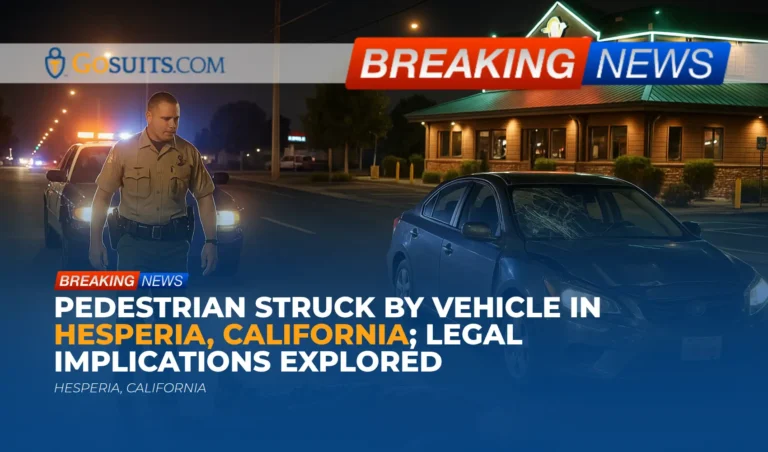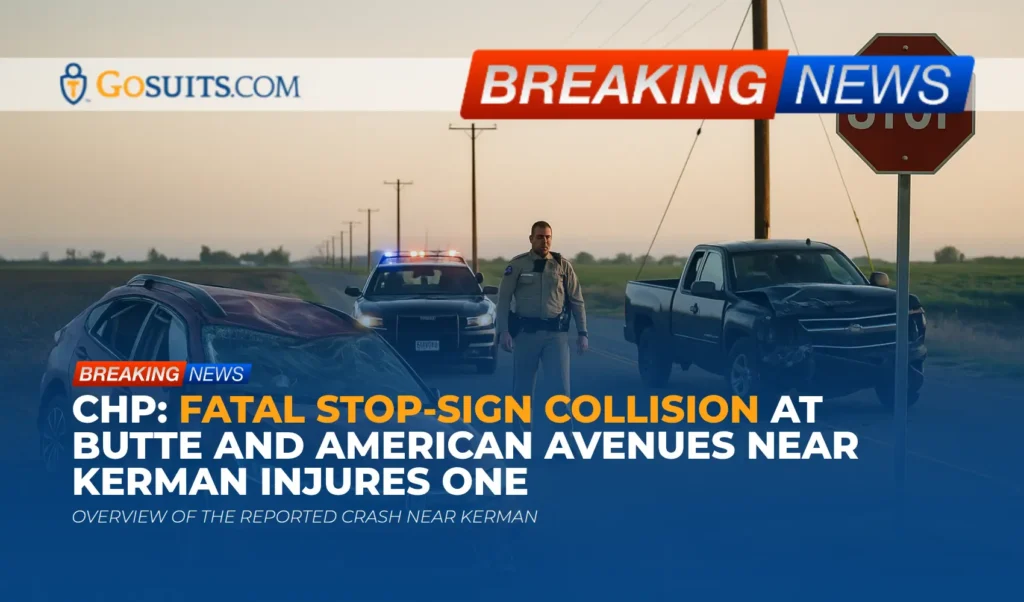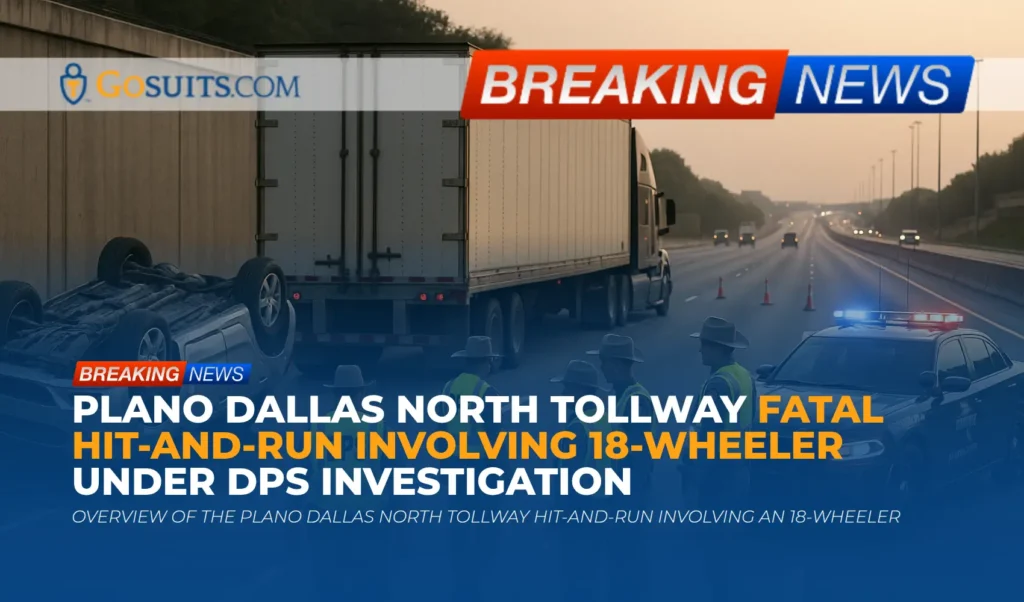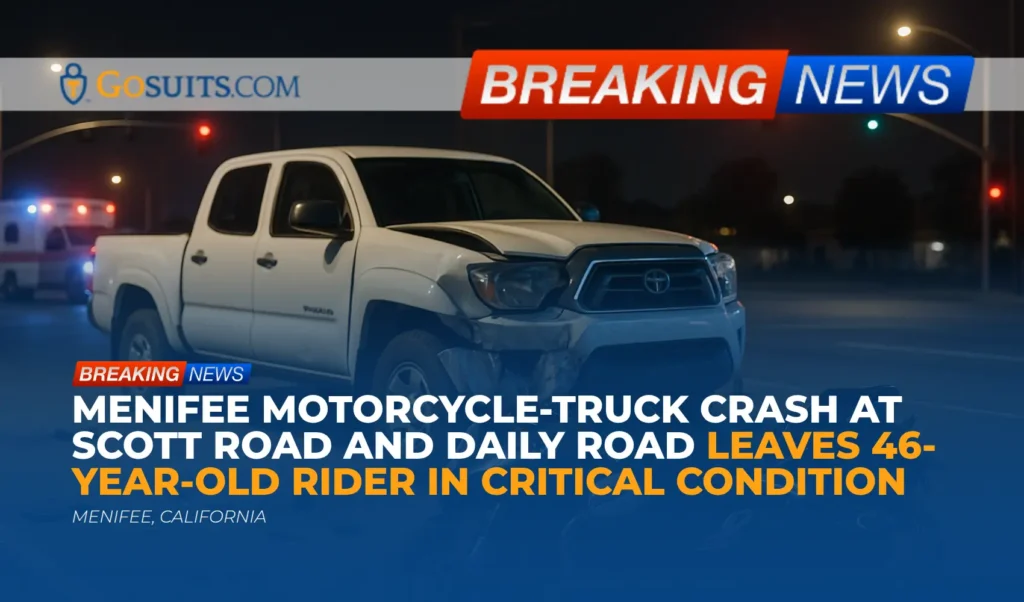On the evening of June 15, 2025, a pedestrian was struck by a vehicle in Hesperia, California, outside the Texas Roadhouse restaurant on Mariposa Road. The incident, reported at approximately 10:12 p.m., prompted a response from the San Bernardino County Fire Department and Hesperia deputies. Initial reports suggested the severity of the injuries warranted a medical helicopter, but it was later canceled, and the pedestrian was transported by ground ambulance to a local hospital. The current condition of the pedestrian remains unknown.
Details of the Incident
The collision occurred near the street entrance of the Texas Roadhouse, situated just south of Main Street. The vehicle involved was identified as a silver Kia Rio, which remained at the scene with visible damage to its windshield and hood. According to the report, the female driver cooperated with authorities during the investigation.
Debris at the scene included what appeared to be food containers on the trunk of the Kia, leading investigators to consider that the pedestrian may have recently left a nearby restaurant when the incident occurred. Northbound Mariposa Road was temporarily closed as deputies conducted their investigation.
Legal Implications of Pedestrian Accidents
Pedestrian accidents often result in severe injuries due to the vulnerability of pedestrians compared to vehicle occupants. These incidents raise complex legal questions regarding liability, negligence, and the rights of the injured party. Understanding these aspects is crucial for anyone involved in or affected by such an event.
Determining Liability
In pedestrian accidents, determining liability is a primary focus of any subsequent legal action. Liability typically rests on establishing negligence, which means proving that one party failed to exercise reasonable care, resulting in harm to another. In this context, negligence could stem from various actions or omissions, such as:
- Driver Negligence: A driver may be negligent by speeding, running a red light, driving under the influence, or failing to yield the right of way to a pedestrian in a crosswalk. Distracted driving, caused by texting, using a cell phone, or other activities, also constitutes negligence.
- Pedestrian Negligence: While drivers have a responsibility to exercise caution, pedestrians also have a duty to act responsibly. A pedestrian could be considered negligent if they dart into traffic without warning, cross the street outside of a designated crosswalk (jaywalking), or ignore traffic signals.
- Environmental Factors: Sometimes, environmental factors play a role in pedestrian accidents. Poorly lit streets, obstructed views, or inadequate signage can contribute to collisions. In such cases, a government entity responsible for road maintenance and safety might bear some liability.
The Role of Evidence in Establishing Negligence
Establishing negligence requires gathering and presenting compelling evidence. This evidence may include:
- Police reports, which provide an official account of the accident, including initial findings and witness statements.
- Photographs and videos of the accident scene, capturing crucial details such as vehicle positions, traffic signals, and road conditions.
- Eyewitness testimonies, which can offer additional perspectives on how the accident occurred.
- Medical records documenting the pedestrian’s injuries and treatment, which are essential for assessing damages.
- Expert analysis, such as accident reconstruction reports, can help clarify the sequence of events and determine the cause of the collision.

Pedestrian Rights and Legal Recourse
Pedestrians injured in accidents caused by negligence have the right to seek compensation for their damages. These damages may include:
- Medical Expenses: Costs associated with medical treatment, including hospital stays, surgeries, rehabilitation, and ongoing care.
- Lost Wages: Compensation for income lost due to the inability to work during recovery. This can include both past and future lost earnings if the injuries result in long-term disability.
- Pain and Suffering: Compensation for physical pain, emotional distress, and diminished quality of life resulting from the injuries.
- Other Expenses: Additional costs incurred due to the accident, such as property damage, transportation expenses, and necessary modifications to accommodate disabilities.
Insurance Considerations
Insurance coverage plays a significant role in pedestrian accident claims. The at-fault driver’s insurance policy is typically the first source of compensation. However, in cases where the driver is uninsured or underinsured, the pedestrian may need to pursue compensation through their own insurance policies, such as uninsured/underinsured motorist coverage or personal injury protection (PIP).
Shared Fault and Comparative Negligence
In some instances, fault for an accident may be shared between the driver and the pedestrian. California follows a comparative negligence rule, meaning that an injured party’s compensation may be reduced by their percentage of fault. For example, if a pedestrian is found to be 20% at fault for the accident, their recoverable damages may be reduced by 20%.
Importance of Legal Representation
Given the complexities of pedestrian accident claims, securing representation from a seasoned personal injury attorney is often crucial. An attorney can:
- Conduct a thorough investigation of the accident.
- Gather and preserve critical evidence.
- Negotiate with insurance companies to pursue a fair settlement.
- Prepare and file a lawsuit if necessary.
- Represent the injured party’s interests in court.
A knowledgeable attorney can help navigate the legal process, protect the injured pedestrian’s rights, and work to maximize their compensation.

Commentary from Gosuits Hesperia, California Personal Injury Attorney
This incident in Hesperia highlights the serious consequences that can arise from pedestrian accidents. While the driver in this case cooperated with authorities, the investigation is critical to determining the precise circumstances that led to the collision and establishing liability. It’s important to consider factors such as visibility at the time of the accident, pedestrian right-of-way, and any potential distractions that may have been present.
From a legal standpoint, this case underscores the importance of a comprehensive investigation and a clear understanding of California’s negligence laws. An injured pedestrian has the right to seek compensation for medical expenses, lost income, pain and suffering, and other related damages. A personal injury attorney can provide invaluable assistance in navigating the legal complexities, gathering necessary evidence, and advocating for the injured party’s rights.






